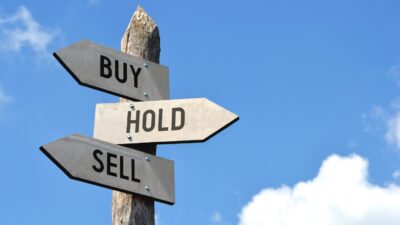Like most private investors, I drip-feed money from my earnings into my investment account each month. To stay fully invested, I need to make regular purchases, regardless of the market’s latest gyrations.
However, the FTSE’s gains mean that the wider market is no longer cheap, and it’s getting harder to find shares that meet my criteria for affordability.
In this article, I’m going to run my investing eye over Royal Bank of Scotland Group (LSE: RBS) (NYSE: RBS.US).
Should you invest £1,000 in Rs Group Plc right now?
When investing expert Mark Rogers has a stock tip, it can pay to listen. After all, the flagship Motley Fool Share Advisor newsletter he has run for nearly a decade has provided thousands of paying members with top stock recommendations from the UK and US markets. And right now, Mark thinks there are 6 standout stocks that investors should consider buying. Want to see if Rs Group Plc made the list?
The triple yield test
It’s worth remembering that the real test of an investment is the return — or yield — it provides, relative to the level of risk it entails and the comparative returns available elsewhere.
Low cash saving and government bond rates since the financial crisis have meant that equities provide one of the few realistic ways of generating returns above the level of inflation.
To gauge the affordability of a share for my portfolio, I like to look at three key yield figures –the dividend, earnings and free cash flow yields. I call this my triple yield test:
| Royal Bank of Scotland | Value |
|---|---|
| Current share price | 350p |
| Dividend yield | 0% |
| Earnings yield | -7.4% |
| Free cash flow yield | -22% |
| FTSE 100 average dividend yield | 2.9% |
| FTSE 100 earnings yield | 5.7% |
| Instant access cash savings rate | 1.5% |
| UK 10yr govt bond yield | 2.9% |
(Yields calculated using trailing twelve month (TTM) figures)
It’s clear that by conventional measures, RBS has little to offer investors — RBS remains a recovery investment.
However, the bank is forecast to break a six-year streak of losses and deliver a profit in 2014. Analysts’ consensus forecasts suggest a profit of 23p per share, which would equate to an earnings yield of 6.6%, slightly above the FTSE 100 average of 5.7%.
There are other signs of hope, too. During the first six months of 2013, RBS generated free cash flow of 40p per share, and earnings of 4.7p per share. Although a full-year profit is unlikely, thanks to an expected £4.0bn increase in impairments from the disposal of bad loans, a full year of free cash flow generation isn’t impossible, and would be an encouraging sign.
We’ll find out what actually happened when the bank reports its full-year results on February 27, but it’s worth remembering that even if RBS does manage to turn a profit this year, a return to dividend payments is unlikely before 2015, at the earliest.
Investing in RBS carries two main risks, in my view: the unknown quality of its remaining loan book, and the risk of political interference. As a result, I rate RBS as a hold, at the current share price.







